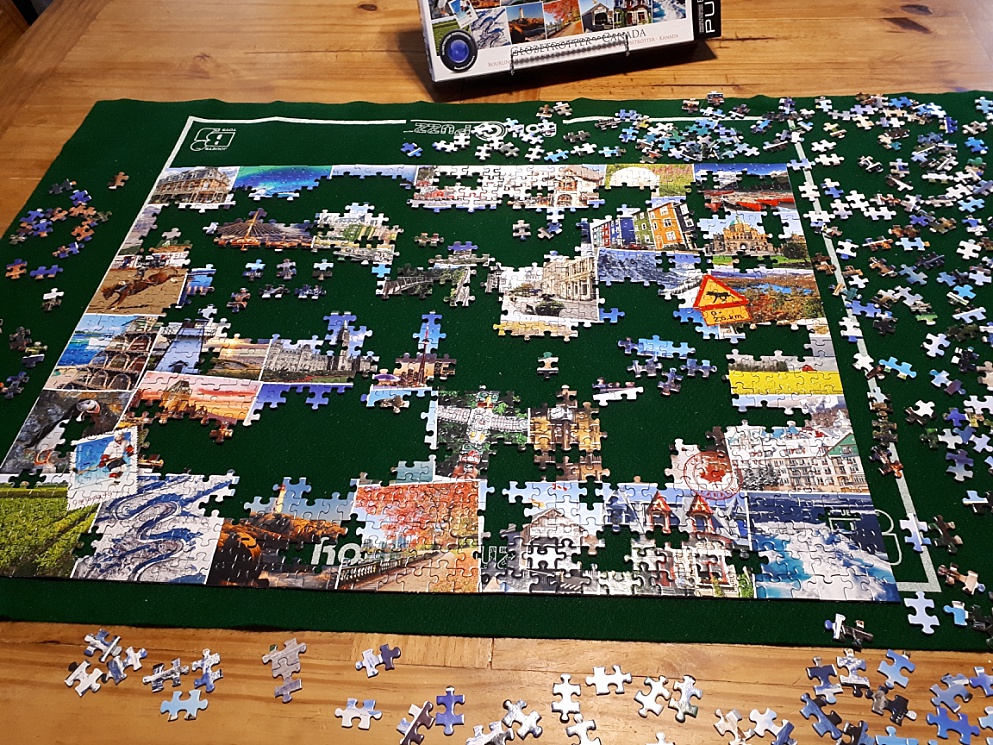I was so surprised at being born
that I didn’t speak for a year and a half.
– Gracie Allen
Surprise is at least as appealing an explanation as this likely more-likely one: That it just takes babies a year or more to separate the linguistic signal from the noise.
As I tackle a stalled 1,000-piece jigsaw puzzle on our Western road trip, I consider this signal/noise issue and other life learnings from 60+ years of puzzling.
First, Find a Friend
Puzzles are like beds: more than twice as easy to make with two people.
Then, Start With the Edges
I start big puzzles by separating the edge pieces from the mass (and mess) of interior pieces. (Doesn’t everyone?) In a relatively short time I can impose some structure on the scatter of shapes and colours, even though I can’t see the whole picture yet.
Accept That Some Edges Hide
No matter how carefully I sort through those pesky pieces, I never find all the edge pieces on the first pass. Nor the second. Nor the forty-second, sometimes. When I have most of them I just have to carry on, believing that I really do have all the pieces and that the missing edges will reveal themselves when the time is right.
Corollary: Check the floor every so often: Some pieces throw themselves off the table to hide.
Follow *Some* Process, Dagnab It
Long before I can assemble whole chunks I can see rough patterns in what might go together: distinctive lines and markings, unusual shapes, rare colours. Putting these to one side as I find them shortens my search and assembly time when I do see how and where to use that sort of piece.
Addendum: Don’t fall in love with the process or with the sort. Sometimes a piece obviously destined to be part of the Hopewell Rocks turns out to be a puffin’s belly. Just as a random example.
Accept the Happy Accidents
Puzzle cuts seem designed to send misleading signals: To get me looking for a distinctive colour or marking that doesn’t actually show on the piece that actually fits. But sometimes the universe puts a piece where I will trip over it, and sometimes I swear my subconscious guides my hand in picking up or placing a piece. I’ve long since given up wondering how *that* works. I’m just happy it does, when it does.
Believe the Tipping Point is Coming
At the start, it’s a slog for sure: Progress is painfully slow. But when more pieces are placed than remain to be placed, everything speeds up: Pieces seem to fall into place effortlessly. I guess it’s that the signal-to-noise ratio increases dramatically: Even as the coastline grows, the number of ships still looking for just the right berth drops.
But I bet Gracie would have had a more entertaining explanation.

Unstalled.